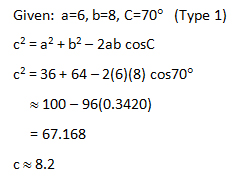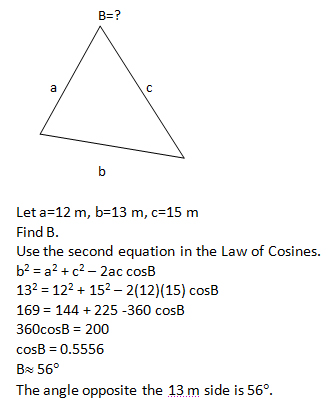The Law of Cosines is used for solving oblique triangles. In the triangle below, sides a, b, and c are opposite angles A, B, and C, respectively.
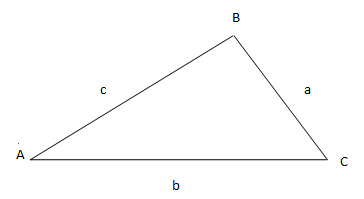
Law of Cosines:
a2 = b2 + c2 – 2bc cosA (angle A is the included angle of sides b and c)
b2 = a2 + c2 – 2ac cosB (angle B is the included angle of sides a and c)
c2 = a2 + b2 – 2ab cosC (angle C is the included angle of sides a and b)
These three formulas are analogous and we use whichever form is applicable to the problem at hand.
We use the Law of Cosines when the given is one of the following types:
- two sides and the included angle (SAS)
- three sides (SSS)
Example 1
In triangle ABC, a=5, b=3, and C=125°. Find c rounded to the nearest tenth.
Solution:
Two sides and the included angle are given (Type 1).
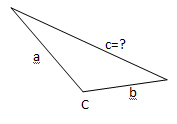
Since we are looking for c, we use the second form of the Law of Cosines.
c2 = a2 + b2 – 2ab cosC
c2 = 52 + 32 -2(5)(3)cos125°
c2 ≈ 25 + 9 – 30( -0.5736) = 51.208
c ≈ 7.2
Example 2
In triangle ABC, a=4, b=5, and c=6. Find A rounded to the nearest degree.
Solution :
Three sides are given (Type 2).
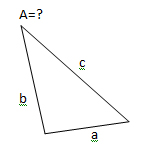
Since we are looking for A, we use the first equation in the Law of Cosines.
a2 = b2 + c2 – 2bc cosA
42 = 52 + 62 – 2(5)(6)cosA
Solve for cosA.
16 = 25 + 36 -60 cosA
60cosA = 45
cosA = 0.75
A ≈ 41°
Try these problems
QUESTIONS
- In triangle ABC, a=6, b=8, C=70°. Find c rounded to the nearest tenth.
- In triangle ABC, a=8, b=3, c=4. Find A rounded to the nearest degree.
- Find the length of the diagonal of the parallelogram in the figure.
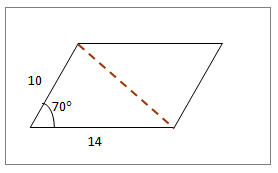
- A rectangular garden is in the form of a triangle with sides 12 m, 13m, 15 m.
Find the angle opposite the side with length 13 m.
Answers
